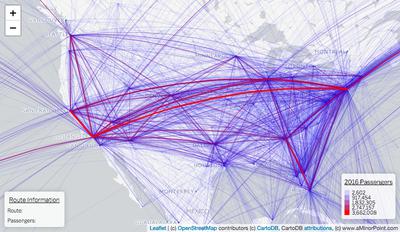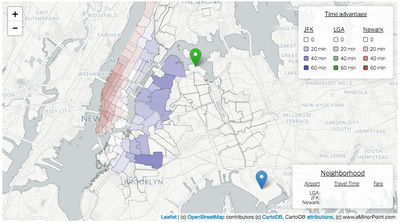Scooters in Washington DC Part 1 - Estimated market share and utilization rates
Using 400 million data points to analyze the scooter market
Scooter companies have exited markets in the past year. Lime left Atlanta, Phoenix, San Antonio, and San Diego in addition to exiting international locations. Lyft exited Atlanta, Phoenix, San Antonio, Nashville, Dallas, and Columbus. Similarly, Uber-owned Jump exited Atlanta, San Diego, San Antonio, and Dallas. Some of these exits were due to limited ridership while others were due to challenging regulatory environments that haven't been as supportive of e-scooters and e-bikes as others.
Washington, DC doesn't seem to be one of these markets. The DC Department of Transportation issued permits to 10 operators for up to 6,000 scooters and bikes for 2019 and recently announced an increase for 2020 to 10,000 scooters and 5,000 bikes, though with a decrease to four and two operators respectively.
How much are these scooters (including e-bikes) being used in DC? What are the scooter market shares? We can get a sense of these answers based on a data set of over 400 million geolocation data points from the months of November and December of 2019. Based on the data, scooters were in use for an estimated 7.7 million minutes over those two months (about 127,000 minutes per day). The estimated minutes of use and estimated market share is broken down below.
Based on the chart, Jump as a company has the leading market share (with the caveat that there may be data issues with Lyft and Bird). This makes sense given the ability to book scooters through the Uber app and leveraging that installed user base, something the other companies (aside from Lyft) can't leverage. However with respect to market share, this isn't a completely fair representation. Each company was granted permits for differing numbers of vehicles which requires looking at the figures through a different lens.
A way to account for part of this difference is to look at utilization rates. For this analysis, the utilization rate is defined the amount of time the scooter is in use as a percentage of the time the scooter is available, and ignores the time for which the scooter isn't reporting any data. For example, if a scooter is in use for one hour, not in use for three hours, and didn't report data for the remaining 20 hours in a day, the utilization rate is calculated as 25% for that day. This assumes that if the scooter isn't reporting data, it otherwise isn't available for use by customers.
Looking at the table, there's a distinct disparity in utilization rates, all of which are relatively low. During a typical 24 hour day, a 4% utilization rate is about one hour of usage per scooter. In the case of Bolt, it becomes clear why they left the market. A 1% utilization rate is just under 15 minutes of usage per day per scooter.
However, there are a few points to keep in mind. First, this data is from the colder months and I suspect usage declines in colder weather. Second, the days in this sample period are relatively short and some riders may be less willing to use scooters when it's dark. And third, it is not the peak season for tourism.
Check back for future updates digging into the data in more detail to reveal usage patterns and the impact of some of the previously mentioned points.
A day in the life of the most utilized scooter
While the average utilization of scooter fleets is in the 1-4% range, individual scooters have had much higher daily utilization rates. In fact, the top estimated figure during November and December for scooters that have at least 20 hours of data available in a day is a Jump bike at 25%.
What was that bike up to? We can split its activities into a few categories
- In use - For 05:38 and traveled 10.6km (6.6 miles) as the crow flies - though likely much further in reality.
- Not in use - For 17:35 the bike sat waiting to be used.
- Recharging - For 00:23 the bike was being recharged. It also was relocated during this time.
- Relocating - For 00:02 the bike was relocated about 550 meters down the road.
- No data - For 00:32 there was no data for the bike.
Based on Jump's pricing model ($0 to unlock, $0.25 per minute as of Feb 11, 2019) the bike generated an estimated $84.50 in revenue for the company. Not bad for one day.
Usage around the 2019 World Series
Just for fun, let's take a look at the usage around Game 5 of the 2019 World Series between the Washington Nationals and Houston Astros. Game 5 took place on a Sunday evening with decent weather and had the highest attendance of the three games played in Washington DC.
At its peak, there were 265 scooters within a block of the stadium just after the game began at 8:07pm. After 8:15pm, the numbers started declining. The game ended just before 11:30pm. In the 30 minutes before and after the last pitch, 91 people used scooters to get home.
Below is a quick look at where riders came from on their way to Game 5. The furthest trip was from Adams Morgan on a Jump bike and came in at 2.5 miles (as the crow flies) and took 30 minutes.
Below is a quick look at where riders traveled to at the conclusion of Game 5. The furthest trip was to Georgetown University and also on a Jump bike and came in at 2.6 miles (as the crow flies) and took 34 minutes.
What's Next
This is just the tip of the iceberg of exploring and analyzing the data to better understand scooters in Washington DC. Stay tuned for further posts diving deeper.
If you have an idea for a post that you would like to see, please use the Contact page to reach out to me!
About the Data
The scooter data is comprised of geolocation data points organized by scooter company collected since October 2019.
It is not uniform across companies with variation in the type and frequency of data. In particular, the data for Lyft and Bird is more difficult to analyze and remains a work in progess. To get something useful from the dataset required assumptions on my part about what activity did and did not consitutue a trip, amongst other factors. Therefore it's my best estimate for the scooter market in Washington DC though it may not 100% line up with each company's internal data.

